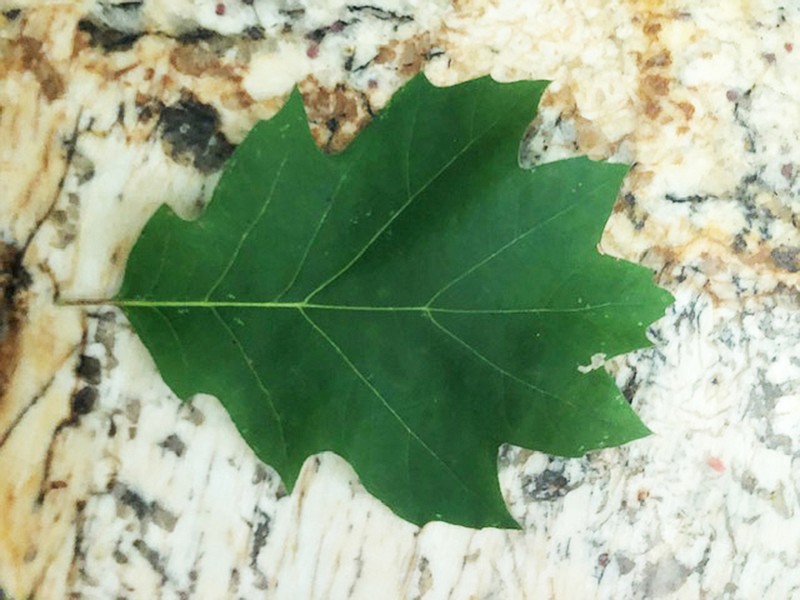Q: Please identify the type of oak this is. [The reader sent a photo.]
A: I believe it is a northern red oak, Quercus rubra.
■ ■ ■
Q: I could really use your help in identifying what is wrong with my little purple plum, planted at the end of March. I love all my plants as you do yours as well, and I want them to thrive. Seeing it not well has me very worried and quite upset! [Emoji representing woe.]
A: I would suspect Japanese beetles, but it is some type of chewing insect. If you can't spot any insects, they may have arrived, fed and moved on. Unless the feeding continues, the plant should not be affected, but it might not be as attractive as it was before. If you do see more signs of feeding or insects, you might want to spray an insecticide.
Q: This wildflower has emerged in my pollinators garden and multiplied readily. [The reader sent a photo.] I didn't plant any of them; they emerged after I removed all the weeds and what I call "sage grass" from the plot. I hope that you can identify it for me. Love your column. You're an Arkansas asset.
A: This wildflower is commonly called either Maryland meadow beauty or pale meadow beauty — Rhexia mariana. It is a perennial that blooms from June through early fall and can be found almost statewide along roadsides and in open, sunny areas.
■ ■ ■
Q: I have pink spirea (seedless) and blue salvia. Any advice on keeping them blooming? I use a bloom booster water-soluble fertilizer and I deadhead the spirea.
A: Even though the spirea are seedless, deadheading or lightly trimming them back will encourage more blooms. They bloom on new growth, so they need to be growing to bloom. Some salvias will rest during periods of extreme heat, but almost all bounce back and bloom again in the fall. Keep them watered and healthy and be patient.
■ ■ ■
Q: I have a garden question for you. As you can see [in the photo I sent], the deer ate all my lily foliage before I got the fishing line up. Are lilies like other bulbs in that they need the sun on their foliage in order to bloom next year? Since I have no foliage left, I'm wondering if that will affect next year's flowers. Thanks for any info!
A: Lilies do need growth after flowering to manufacture food for next year's growth, but you have enough leaves at the top, plus the green stalks, which can manufacture food. I think your plants will be fine, just a bit unusual looking. Fertilize after they bloom, keep them watered and protect them earlier next year.
■ ■ ■
Q: What is the tall plant with flowers? [The reader sent a photo.]
A: The plant is commonly called rose campion, Lychnis coronaria. It is a biennial that can reseed and continue coming up in parts of the garden.
Retired after 38 years with the University of Arkansas Cooperative Extension Service, Janet Carson ranks among Arkansas' best known horticulture experts. Her blog is at arkansasonline.com/planitjanet. Write to her at P.O. Box 2221, Little Rock, AR 72203 or email jcarson@arkansasonline.com
